Looking for a good Flank Steak Substitute? We’ve got you covered! Not only are we including our favorite beef replacements, but we are also adding some vegan options.
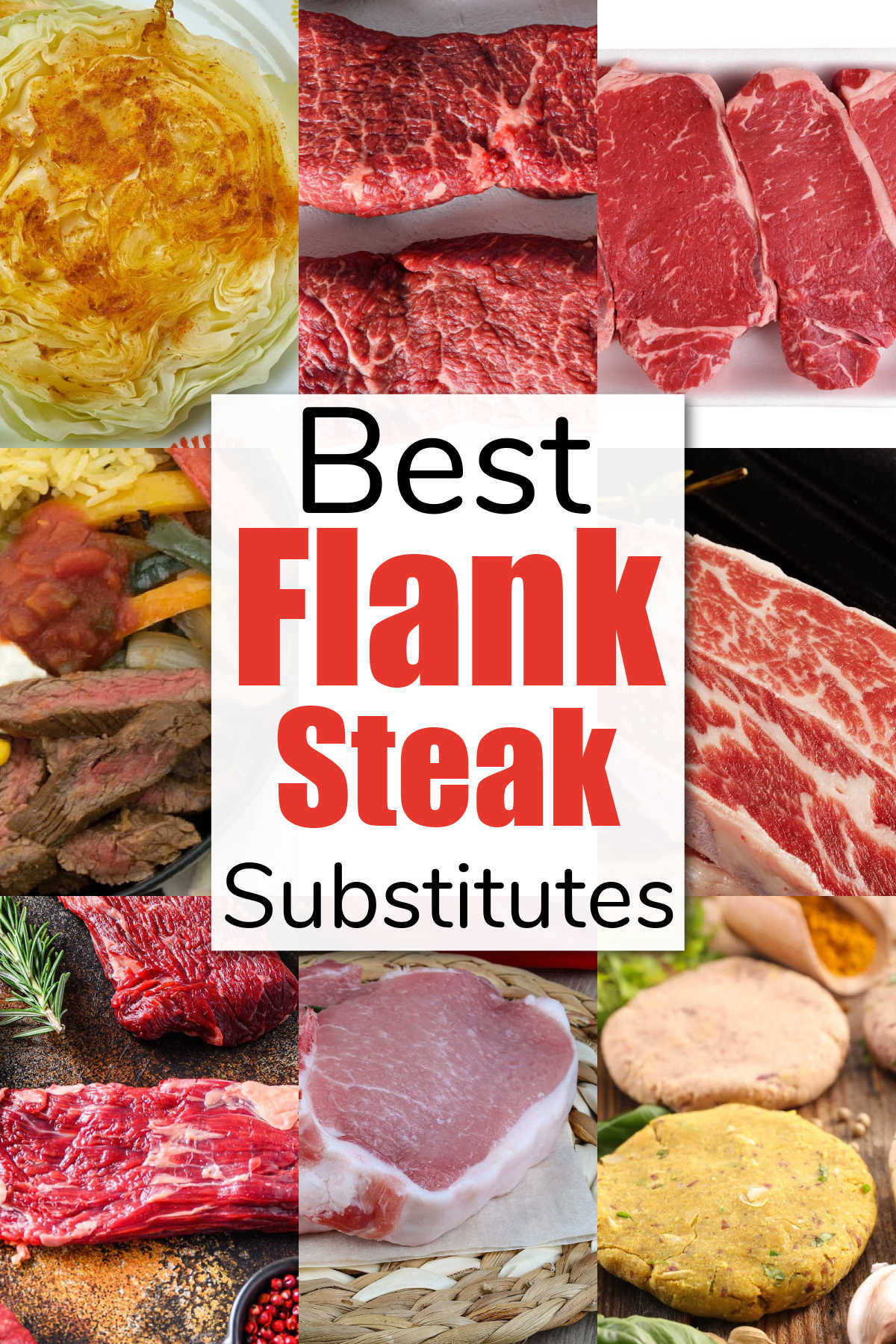
🥩What is Flank Steak?
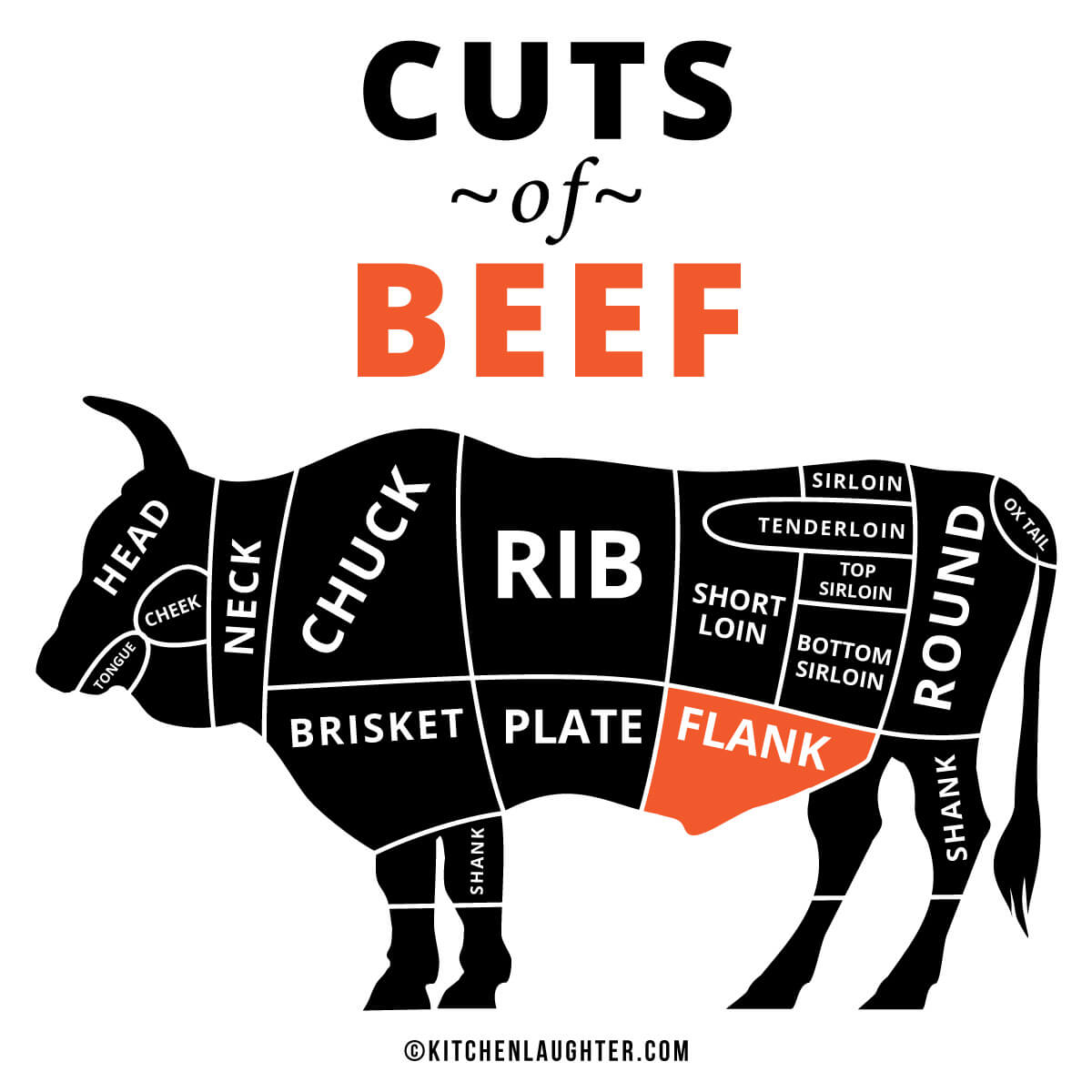
The flank steak isn’t really a traditional steak at all! It comes from the extremely tough muscles of the cow’s belly, whether it is prime vs choice.
Because it is so tough, it was typically one of the cheapest cuts of meat at the butcher, but with a few tips and tricks, this flavorful cut can be a perfect choice.
It is also known as a London Broil (which is actually not a specific cut, but a cooking method). You may also see it called a jiffy steak.
🔥Best Cooking Methods For Flank Steak
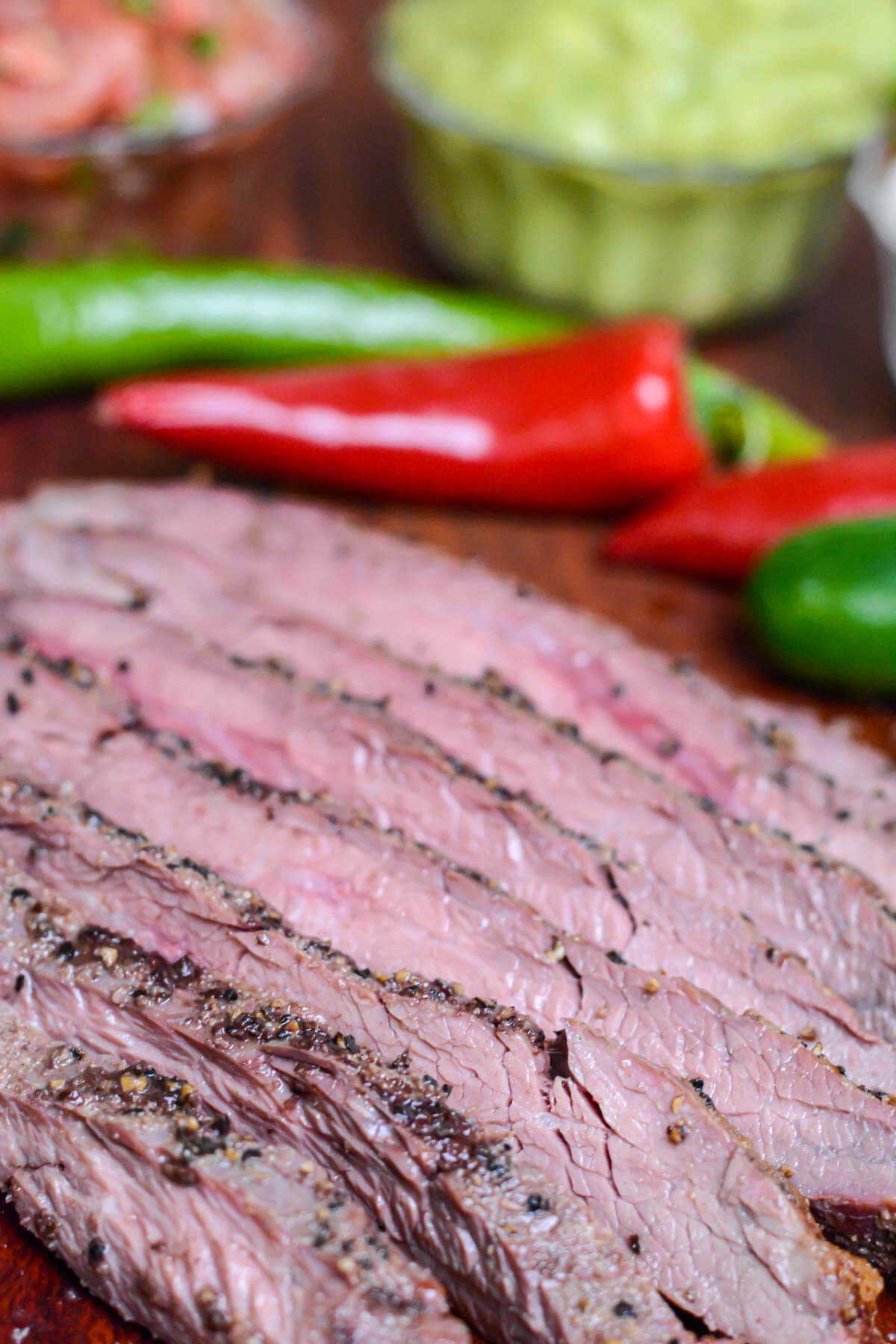
Grilling
You’ll typically see recipes that call for flank steak will include a marinade in an acidic base, or manually tenderizing it using a mallet.
I went for the marinade when I made this grilled Tex Mex flank steak. I used a grill preheated at 450ºF and cooked the steak to 135ºF internal temperature for a medium-rare finish.
Smoking
The other way to make this more tender is using a low-and-slow grilling or smoking, where the connective tissues will break down over time.
Marinating is not needed for smoked flank steak. You will need to preheat the grill or smoker to 225°F and cook the flank steak to a medium-rare to medium finish just like for the fast grilling method.
Broiling
Broiling is another way to provide the high direct heat needed to quickly sear flank steak.
You’ll need to position the steak about 4-6 inches from the heat source and broil about 5-6 minutes per side for a medium-rare to medium finish.
Pan Searing
The fastest and most convenient way to give your steak a caramelized crust while keeping the inside moist.
In a cast iron skillet or another heavy pan preheated over high heat, it will take about 3-4 minutes of searing per side for medium-rare doneness.
Always use a meat thermometer to ensure the meat doesn’t overcook.
Sous Vide
A low and slow cooking method where the steak sits in a precisely controlled water bath for the juiciest most tender texture.
You’ll need to set the water bath 5-10 degrees below your desired final temperature (120-125°F for medium-rare). It will take 1-4 hours for the steak to cook, depending on thickness.
To finish, quickly sear the flank steak in a hot skillet for 2 minutes per side.
Stir Frying
It’s fast, efficient, and perfect for cooking steak cut into thin strips. This is the preferred cooking method for Asian-inspired dishes.
Be careful when slicing the steak to cut against the grain. Stir-fry in a hot skillet or wok only for a few minutes until the steak strips are no longer pink.
It’s also really important to not overcrowd the pan which can cause the steak slices to steam instead of sear.
💡Best Uses
You’ll most commonly use this steak where strips of meat are needed (like fajitas).
There isn’t a lot of fat in this cut, which means you’ll most likely want to tenderize it or closely monitor its internal temperature using a meat thermometer.
I almost always cut this into strips for meals. I try to cut in thin slices just in case the meat didn’t tenderize as much as I had hoped.
✔️Whole Steak | Grilled or broiled flank steak is usually cooked whole so it remains moist on the inside.
✔️Steak Cubes | You can use cubed flank steak for stews and kebabs. I used top sirloin for these grilled Greek steak bites but you can definitely use flank steak instead.
When slow-cooked in a stew or braise, the connective tissues will break down so you’ll get incredibly tender bites!
✔️Steak Slices | Stir-fried or sauteed thinly sliced flank steak is perfect for fajitas, and Asian dishes, as well as salads, rice bowls, wraps, and sandwiches.
📝19 Best Flank Steak Substitutes
Listed below are the most common substitutes and a quick summary that you can easily refer to. Also, feel free to check our free printable Beef Cuts Chart to get an overview for all of them.
| Steak Type | Description | Flavor | Texture | Best Cooking Methods | Alternative Names |
|---|---|---|---|---|---|
| Skirt Steak | Cut from under the ribs; two types: inside and outside. | Beefy with higher fat content. | Lean with some fat marbling. | Grilling, marinating. | Philadelphia steak, Romanian tenderloin, Arrachera. |
| Hanger Steak | Also known as “Butcher’s steaks,” cut from the abdomen. | Rich, beefy flavor. | Marbled, can be chewy. | Marinating, grilling to medium-rare. | Butcher’s steak, hanging tender, bistro steak. |
| Tri Tip Steak | Cut from the sirloin, near the hip. | Beefy, slightly sweet. | Thick and tender. | Marinating, grilling, smoking. | Triangle steak, Santa Maria steak, Newport steak, culotte steak, bottom sirloin tip. |
| Flat Iron | Cut from the shoulder area. | Rich, beefy. | Uniform thickness, marbled. | Grilling, pan-searing. | Butler’s steak, oyster blade steak, shoulder top blade steak, top blade steak, book steak, chuck clod steak. |
| Top Sirloin | Cut from below the tenderloin. | Beefy, less intense than flank. | Uniform thickness, lean. | Grilling to medium. | Sirloin butt steak, top sirloin butt, center-cut sirloin, sirloin cap steak. |
| Flap Steak | Cut from the abdomen, near the flank. | Beefy, similar to flank. | Marbled, similar to flank. | Grilling, pan-searing, marinating. | Sirloin tip, bavette, faux hanger, bottom sirloin butt. |
| Top Round Steak | From the cow’s hindquarters, lean. | Beefy, less intense than flank. | Lean, less tender. | Marinating, tenderizing, grilling, braising. | Inside round steak, London broil. |
| Chuck Eye Steak | Similar to ribeye, from the shoulder. | Rich, beefy. | Marbled, can be chewy. | Grilling, pan-searing. | Delmonico steak, boneless chuck fillet, chuck filet steak. |
| Petite Tender (Teres Major) | Lean cut from the shoulder. | Tenderloin-like. | Tender, lean. | Grilling, broiling. | Shoulder tender, bistro filet, beef shoulder petite tender. |
| Eye Of Round Steak | Lean, boneless cut from the rear leg. | Beefy, intense. | Lean, less tender. | Slow-roasting, braising. | Round eye pot roast, eye round roast. |
| Beef Coulotte (Top Sirloin Cap) | Boneless cut from the top sirloin. | Robust, beefy. | Marbled with fat cap. | Grilling, roasting. | Picanha, rump cover, rump cap. |
| Beef Fajita Strips | Thinly sliced skirt or flank steak. | Rich, beefy. | Tender, quick-cooking. | High-heat searing, stir-frying. | – |
| Portobello Mushrooms | Large, dense mushrooms, great for slicing. | Earthy, meaty. | Dense, holds together well. | Grilling, marinating. | – |
| Tofu | Firm soy-based product, high in protein. | Neutral, takes on flavors well. | Firm, holds shape. | Marinating, grilling, stir-frying. | – |
| Cauliflower | Versatile vegetable, can be sliced into steaks. | Mild, slightly nutty. | Firm in the center, softer on the outside. | Roasting, smoking, grilling. | – |
| Vegan Steaks | Commercial meat substitutes made from various plant-based ingredients. | Varies by brand, aims to mimic beef. | Varies, often chewy and dense. | Follow package instructions, typically grilling or pan-searing. | – |
| Cabbage Steaks | Sliced cabbage, can absorb flavors well. | Mild, slightly sweet. | Firm in the center, softer leaves. | Grilling, roasting. | – |
| Jackfruit | Tropical fruit with a meat-like texture when unripe. | Neutral, absorbs marinades well. | Stringy, similar to pulled meat. | Slow cooking, marinating, skillet or oven cooking. | – |
| Seitan | Made from vital wheat gluten, high in protein. | Varies, can be seasoned to mimic beef. | Chewy, dense. | Marinating, grilling, pan-frying, stir-frying. | – |
Skirt Steak
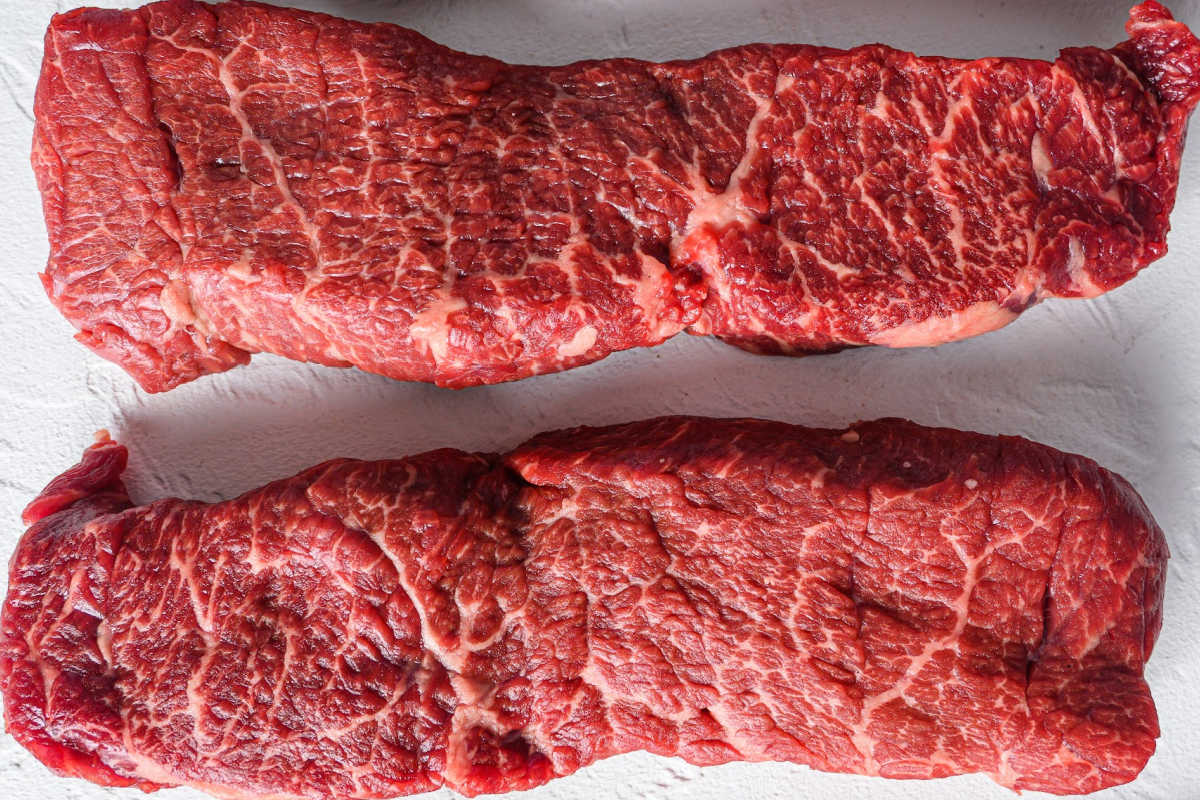
There are two types of skirt steaks: the inside and outside. Both come from the diaphragm muscles and their names are based on the location under the ribs where they are cut.
It is hard to find outside skirt steaks in grocery stores. They are larger and thicker, but end up going to commercial operations. What you’ll find in the grocery store is almost always the tough inside skirt.
These are both pretty lean cuts, but you’ll typically see some fat marbling on the skirt steaks. In general, they have a higher fat content, compared to flank steak.
Don’t be fooled, though. There are still large connective tissues that can make this tough if you don’t take the proper precautions.
🔪Preparation/Cooking | Skirt steak is generally a bit tougher than flank steak as you can see in our skirt steak vs. flank steak comparison guide. It’s certainly a good substitute, but a little less forgiving when it comes to cooking it.
Make no mistake about it. Grilled skirt steak is easy to pull off. You just need to carefully monitor it while it’s grilling to not overcook this cut. A skirt steak marinade can also help with tenderizing this tougher cut of meat.
🗒️Alternative Names | Philadelphia steak, Romanian tenderloin (in some Jewish delis), Arrachera (in Mexican cuisine).
Note: The only store where I routinely find the outside skirt steak is at Wild Fork. They do a great mail order. The other option is to ask your butcher to special order it.
Hanger Steak
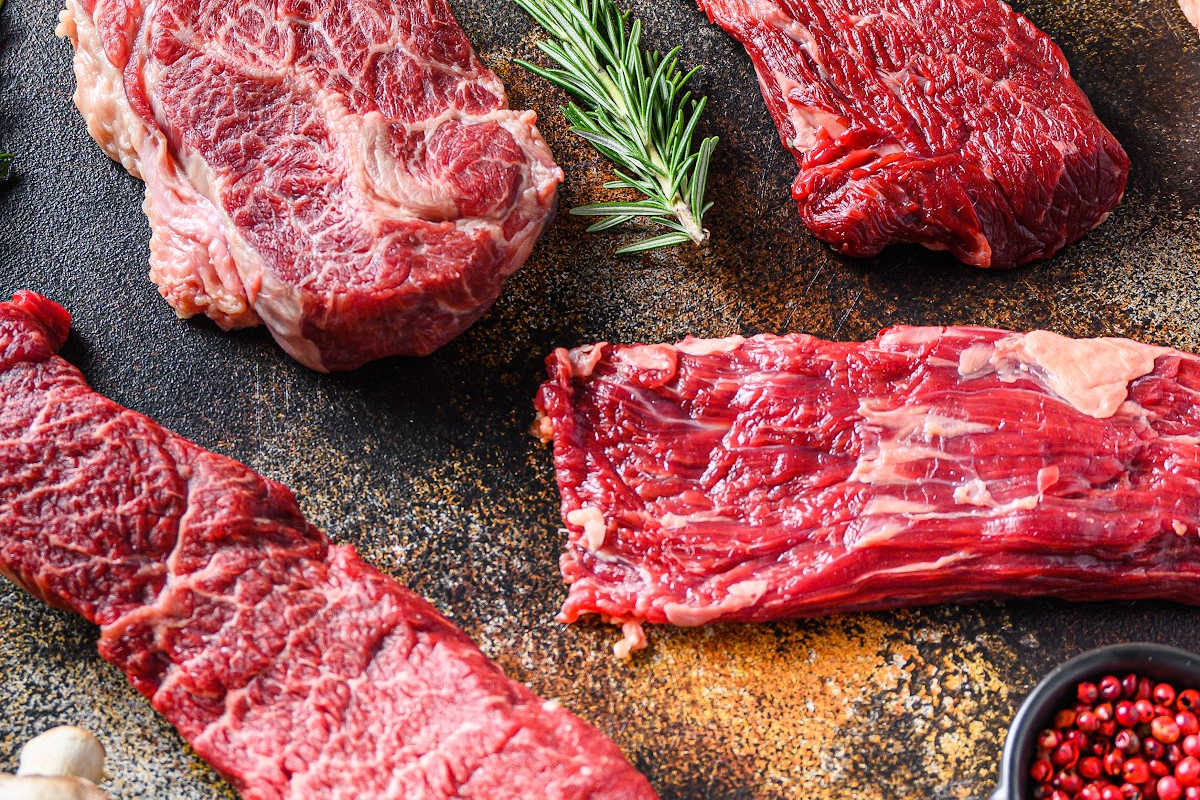
Hanger steaks have recently become more popular. Also known as “Butcher’s steaks,” these are cut from the abdominal muscles of the cow.
These have more marbling (similar to the skirt steak) but can still be chewy if you overcook.
🔪Preparation/Cooking | Like the flank steak, these absorb marinades extremely well. You should prepare them in a similar manner and definitely cut across the grain. You’ll have the most success if you don’t cook these past medium to medium rare.
Availability | It can be harder to find these in the store, but I have had luck at Costco. If you can’t find it, ask your butcher.
🗒️Alternative Names | Butcher’s steak, hanging tender, bistro steak.
Tri Tip Steak
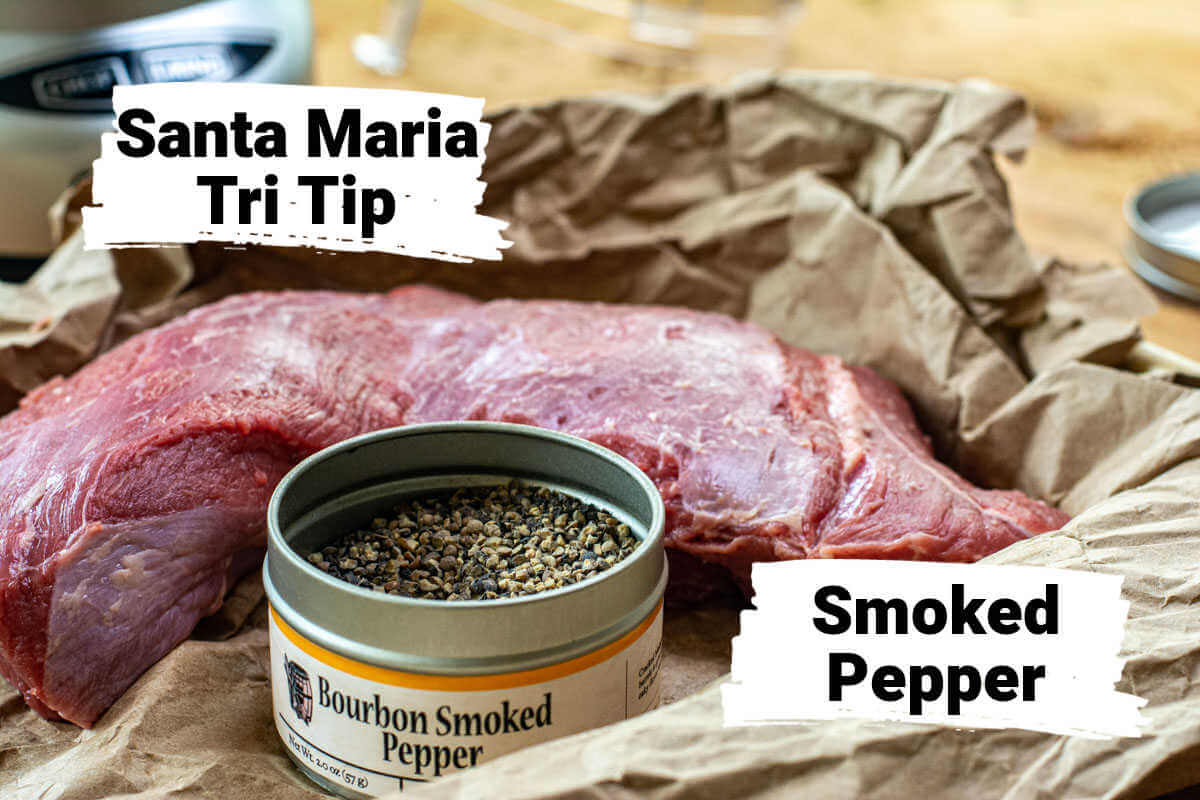
I absolutely love a good tri tip! This is also known as a Santa Maria or Newport steak.
It is a cut from the sirloin, near the hip of the cow, and will typically be in 1 ½ or 2-pound cuts.
🔪Preparation/Cooking | Since this is a thicker cut of beef, you’ll need to marinade it longer. To make a juicy, marinated tri tip on the grill, I typically let it soak up the liquid overnight.
Like the other lean cuts, this will get tough if you cook it past medium. On that note, A smoked Santa Maria tri tip will turn out delicious as this cut benefits low and slow cooking methods.
Availability | This cut is most commonly found in the Western United States, so if you don’t see it in your grocery store, just ask the butcher to cut one for you.
🗒️Alternative Names | Triangle steak, Santa Maria steak, Newport steak, culotte steak, bottom sirloin tip.
Flat Iron
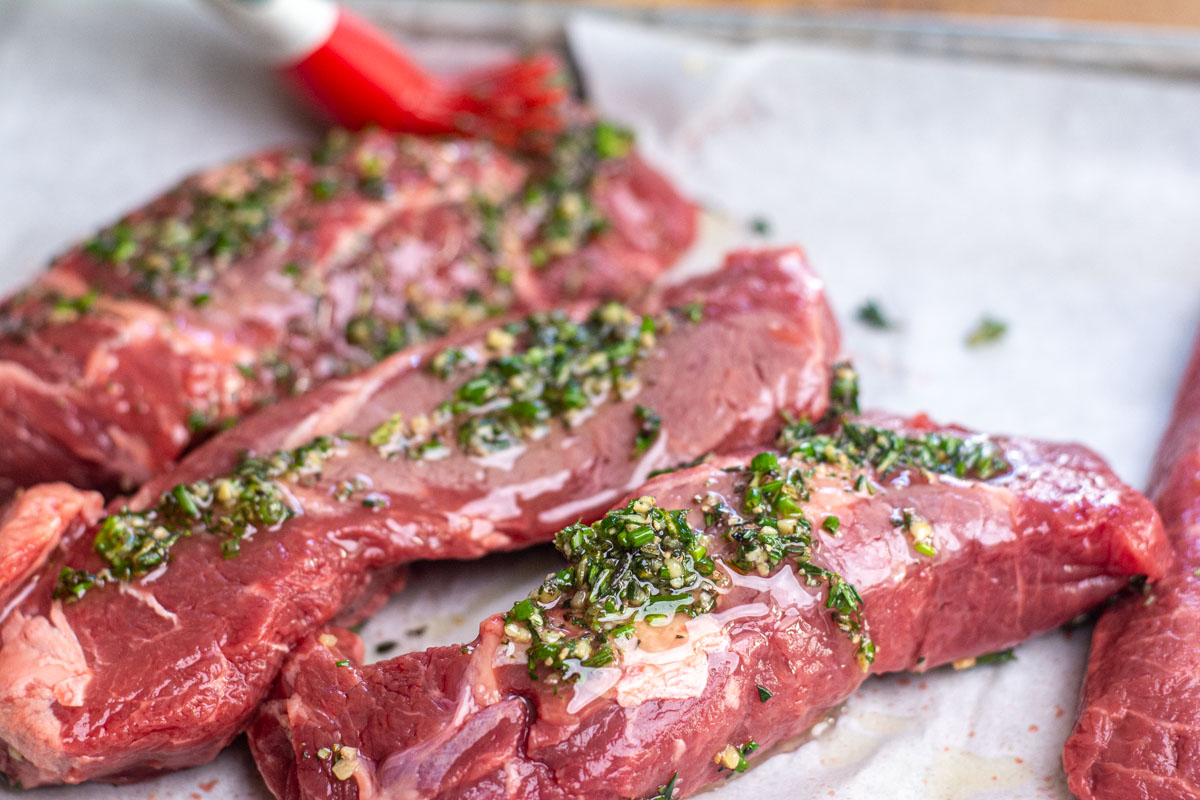
The flat iron steak is cut from the shoulder area of the cow and is also known as a Butler’s or Oyster Blade steak.
These make an excellent substitute as they typically are found in a uniform thickness, making it easy to grill. They have a lot more marbling than a flank steak, and typically cost a little less.
🔪Preparation/Cooking | While a marinade will help with this cut, it really isn’t necessary. Odds are that your flank steak recipe calls for a marinade, so if you are replacing it with a flat iron, you should follow the same instructions.
Or, skip the marinating and enjoy these grilled herb-crusted flat iron steaks. The key here is to cook the steaks based on internal temperature. They will turn out perfect every time!
Availability | This is another cut of beef that is harder to find on the store shelves. I have almost always had to ask the butcher and they had it in the back.
🗒️Alternative Names | Butler’s steak (in the UK), oyster blade steak (in Australia and New Zealand), shoulder top blade steak, top blade steak, book steak, chuck clod steak.
Top Sirloin
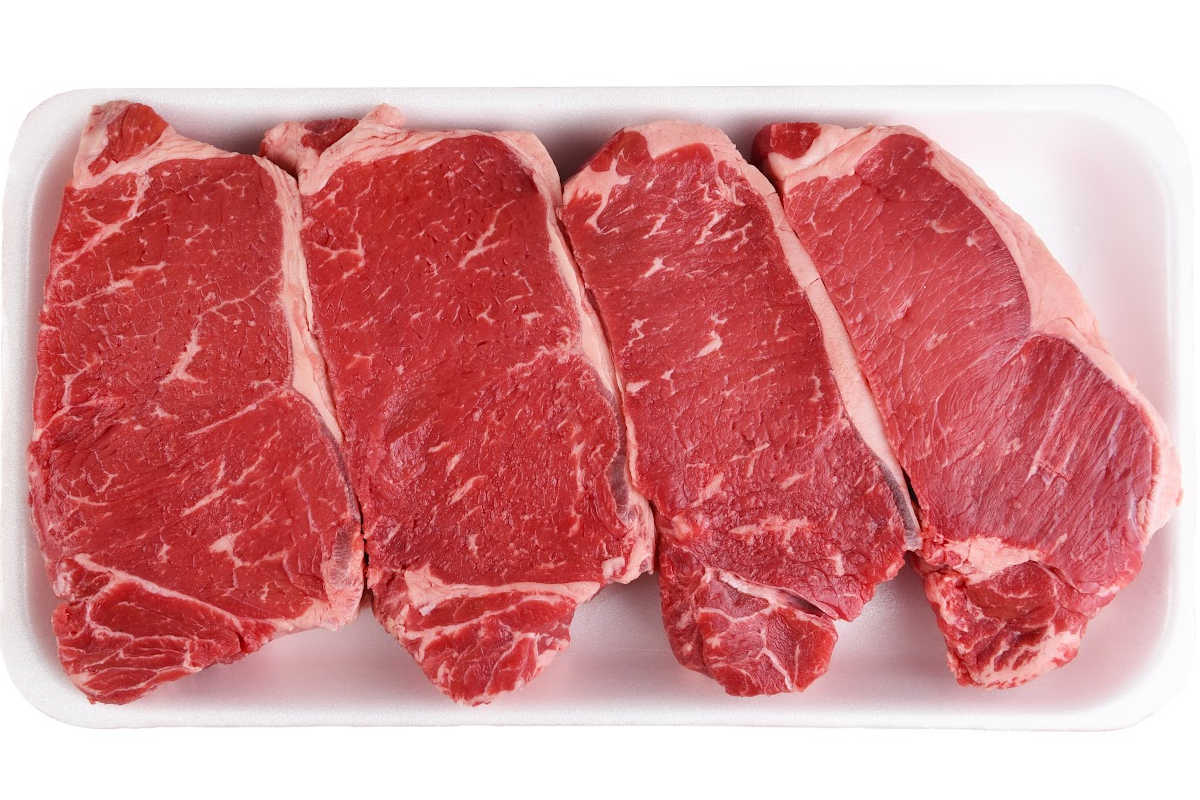
This is the most common cut of meat you’ll find on the store shelves. This is cut from the area just below the tenderloin, making it a bit more forgiving to grill.
You’ll notice that there isn’t the distinctive grain pattern you’ll find in a flank steak.
🔪Preparation/Cooking | It will still absorb the marinade easily and the uniform thickness of the cut makes it great for grilling.
It is still a lean cut and you’ll want to grill it to no more than medium.
The only real drawback to this cut is that it won’t work as a good replacement if your recipe will roll, stuff, or tie the steak. In that case, one of the flat cut steaks will be a much better option.
🗒️Alternative Names | Sirloin butt steak, top sirloin butt, center-cut sirloin, sirloin cap steak (when the cap is left on).
Flap Steak
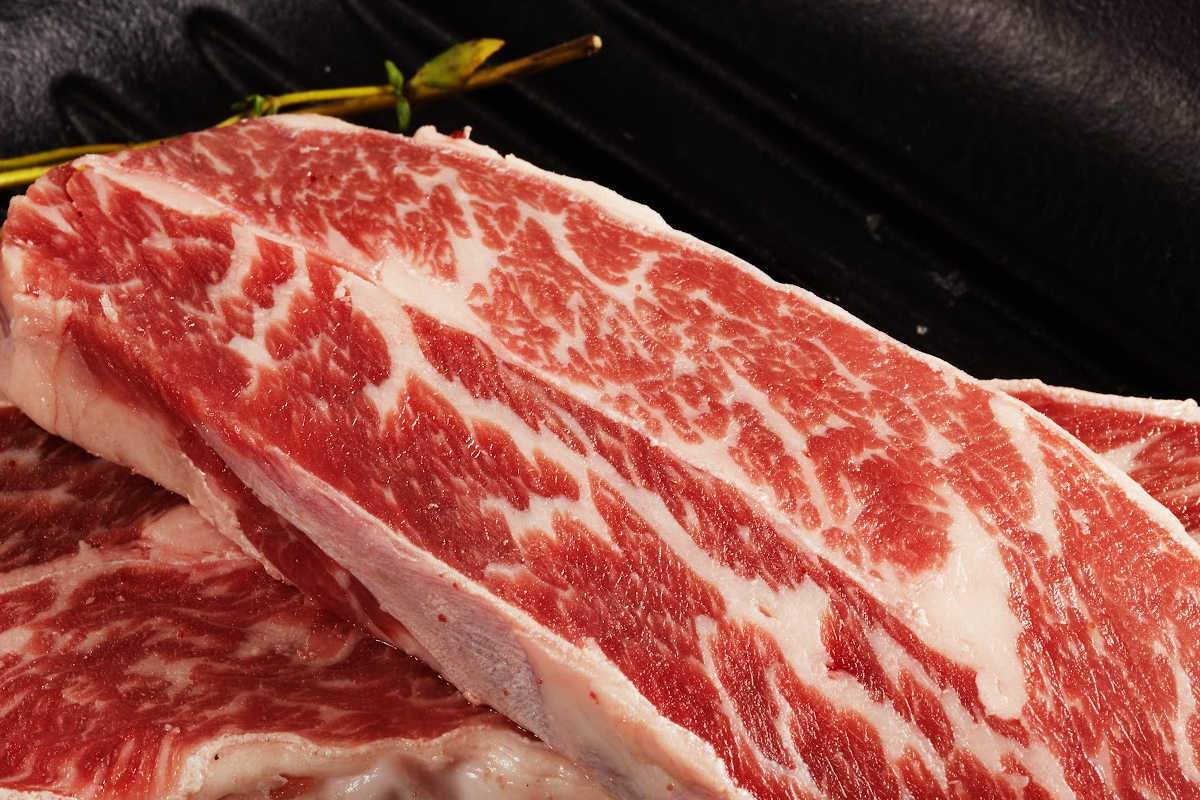
Flap steaks are cut from the abdomen of the cow, just down from the flank. They have a similar texture to flank steak thanks to their leanness and long muscle fibers. The biggest difference is that these will have more marbling, but otherwise cook extremely similarly.
These typically cost a little less than the flank, but I think that the lean flank steak has a “beefier” flavor.
In different parts of the country, you may see this marketed as a sirloin tip steak.
🔪Preparation/Cooking | Regardless of the name, you will find the most success with using a citrus marinade to help break down the connective tissues.
Cook it similarly to flank steak. Hot and fast straight on the grill grates or in a cast-iron skillet are the best ways to get a nice sear without overcooking the flap steak.
Aim for a medium rare to medium doneness. For medium-rare, remove from heat once the thermometer reads 130-135°F.
🗒️Alternative Names | Sirloin tip, bavette (which can also refer to skirt steak in some contexts), faux hanger, bottom sirloin butt.
Note: You may see this called a bavette steak. When I do, I know the butcher is using a fancy French word and usually the prices reflect it. Don’t be fooled. The flap steak should be pretty inexpensive.
Top Round Steak
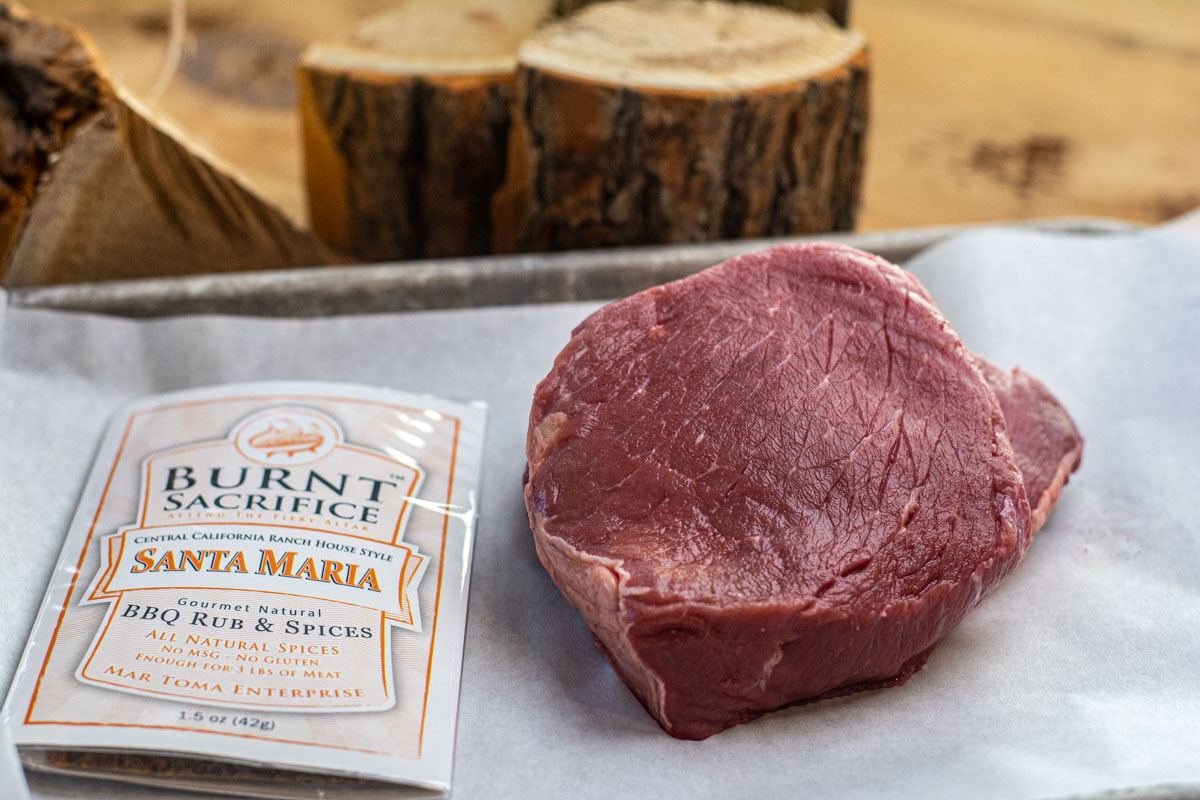
Top round steak comes from the cow’s hindquarters and it’s a lean cut, less tender than flank steak but usually more affordable and with a similar beefy flavor.
It’s a versatile cut often used for roasting and slow cooking.
🔪Preparation/Cooking | For fast, high heat cooking methods such as grilling, and pan-searing, I recommend you use a tenderizing method. Pounding this steak with a meat mallet or marinating it will make it more tender and juicy.
Braising and slow cooking can also make this steak amazingly tender and perfect for stews and pot roasts.
We tried the smoked top round steak which is another way to slow cook this lean cut and it turned out amazing!
I usually smoke it at 225-250°F until the internal temperature reaches 135°F for a medium rare finish.
Whatever cooking method you choose, the top round has the best texture at medium-rare to medium doneness so keep an eye on it to prevent overcooking.
🗒️Alternative Names | Inside round steak, London broil (when broiled or grilled and then thinly sliced), butterball steak.
Chuck Eye Steak
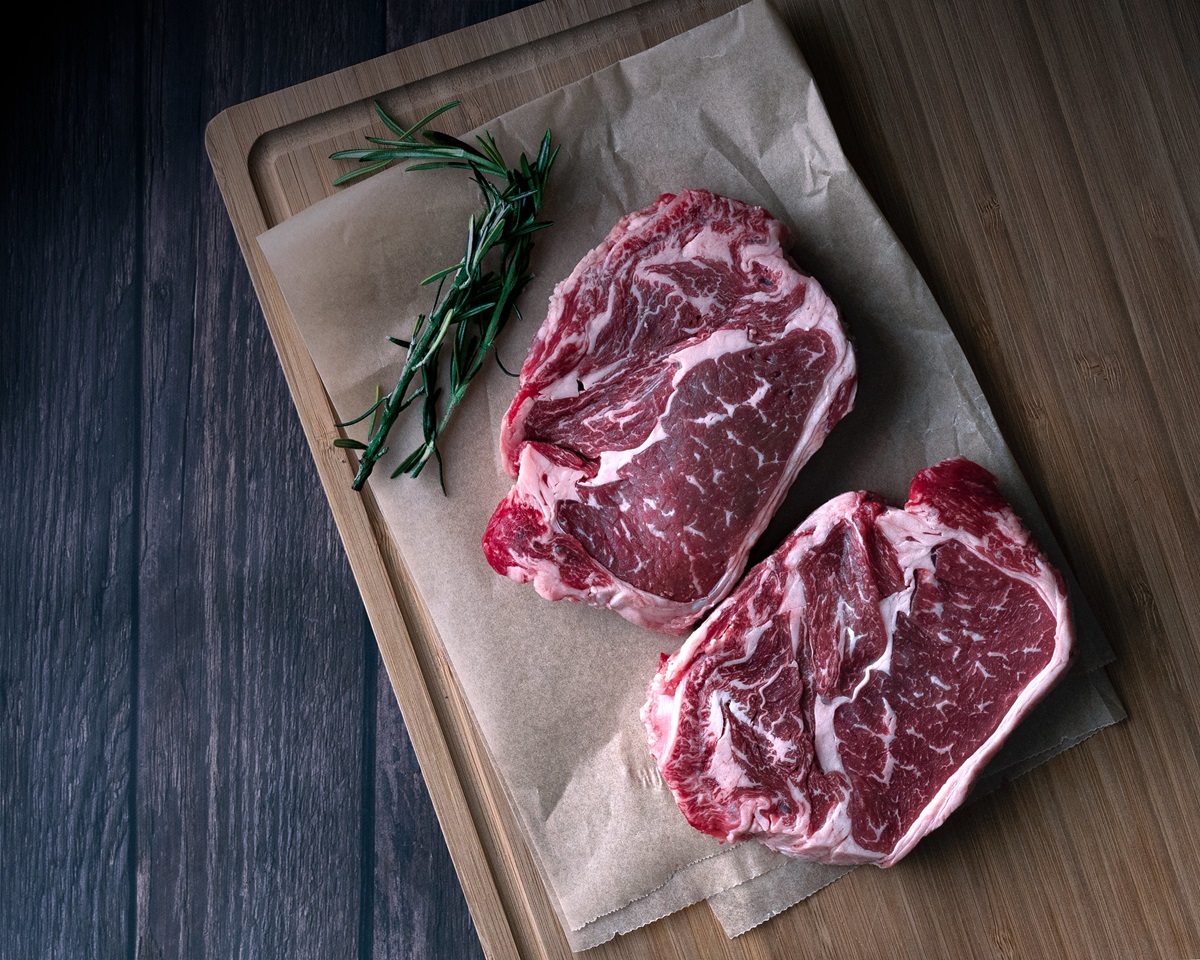
A cut with similar flavor and marbling to ribeye, but less costly. Not surprisingly, chuck eye steak is also known as the “poor man’s ribeye”.
This is a smaller cut, typically 1 inch thick, with enough marbling to make it worth its nickname.
🔪Preparation/Cooking | Chuck eye steaks have nice marbling to keep them juicy and flavorful, but they can still become chewy if overcooked.
Grill or pan sear them fast, over high heat, and aim for a medium-rare to medium finish.
Make no mistake about it: this is great-tasting meat. Don’t stress too much about the seasoning. Plain salt and pepper is actually a good option here. The natural flavor of the chuck eye will be the star of the show.
🗒️Alternative Names | Delmonico steak, boneless chuck fillet, chuck filet steak.
Petite Tender (Teres Major)
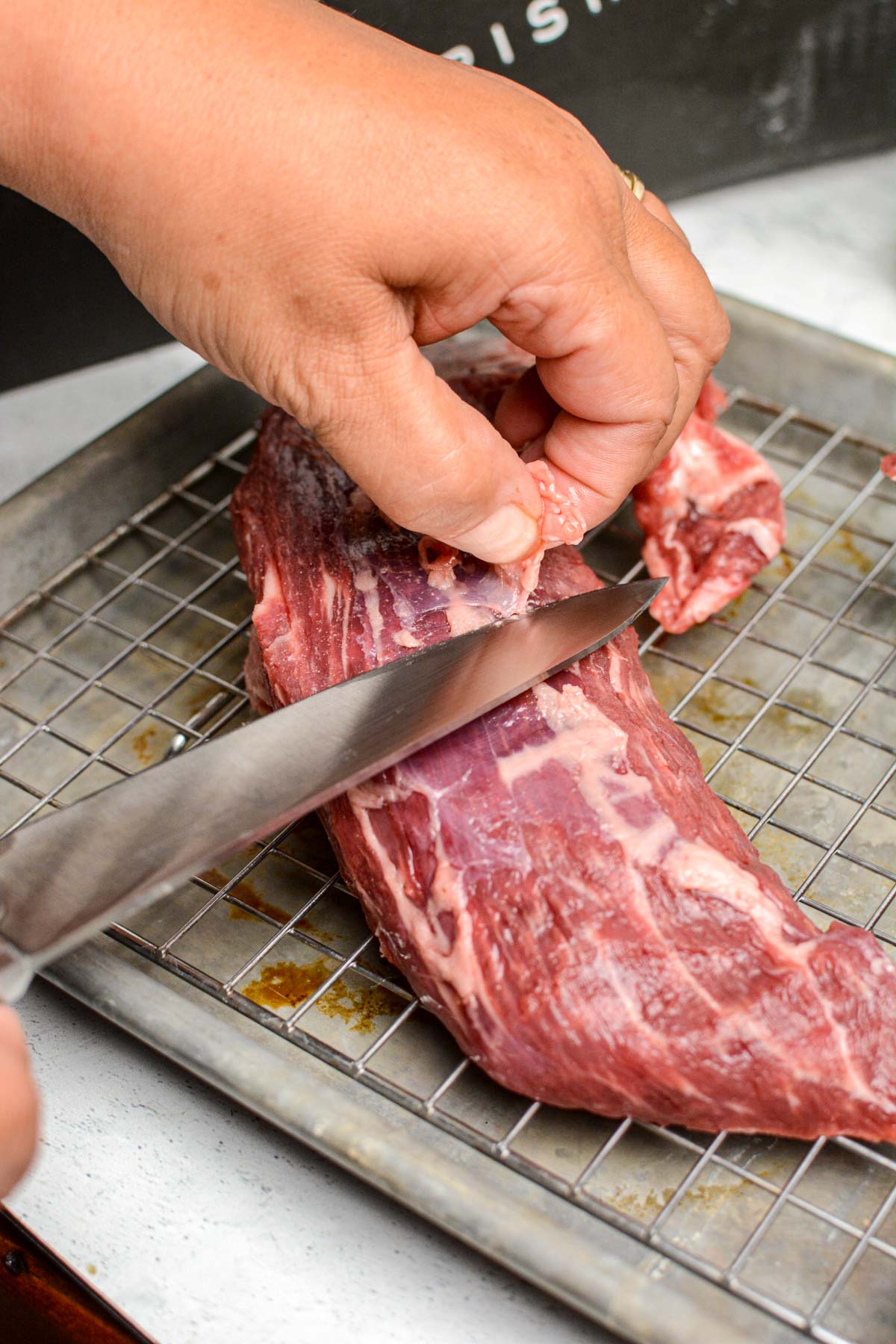
If tenderness is what you’re looking for, the petite tender will get you as close as possible to tenderloin or filet mignon. It is a small and lean cut from the shoulder area of the cow.
This is not a well-known cut, and you could say it’s a hidden gem. The petite tender, also known as Teres Major is pretty close in both taste and texture to the tenderloin but more affordable.
🔪Preparation/Cooking | Cook this cut over high heat to medium doneness at the most. I like to preheat the grill to at least 450ºF.
A shorter cooking time benefits this lean cut. It will sear the outside and give it a nice char without the meat cooking all the way through.
Grilled petite tender steak tastes wonderful with a simple homemade rub but you can also broil it. Also, let it rest for 10 minutes after cooking for the juices to redistribute inside the meat.
🗒️Alternative Names | Shoulder tender, bistro filet, beef shoulder petite tender.
Eye Of Round Steak
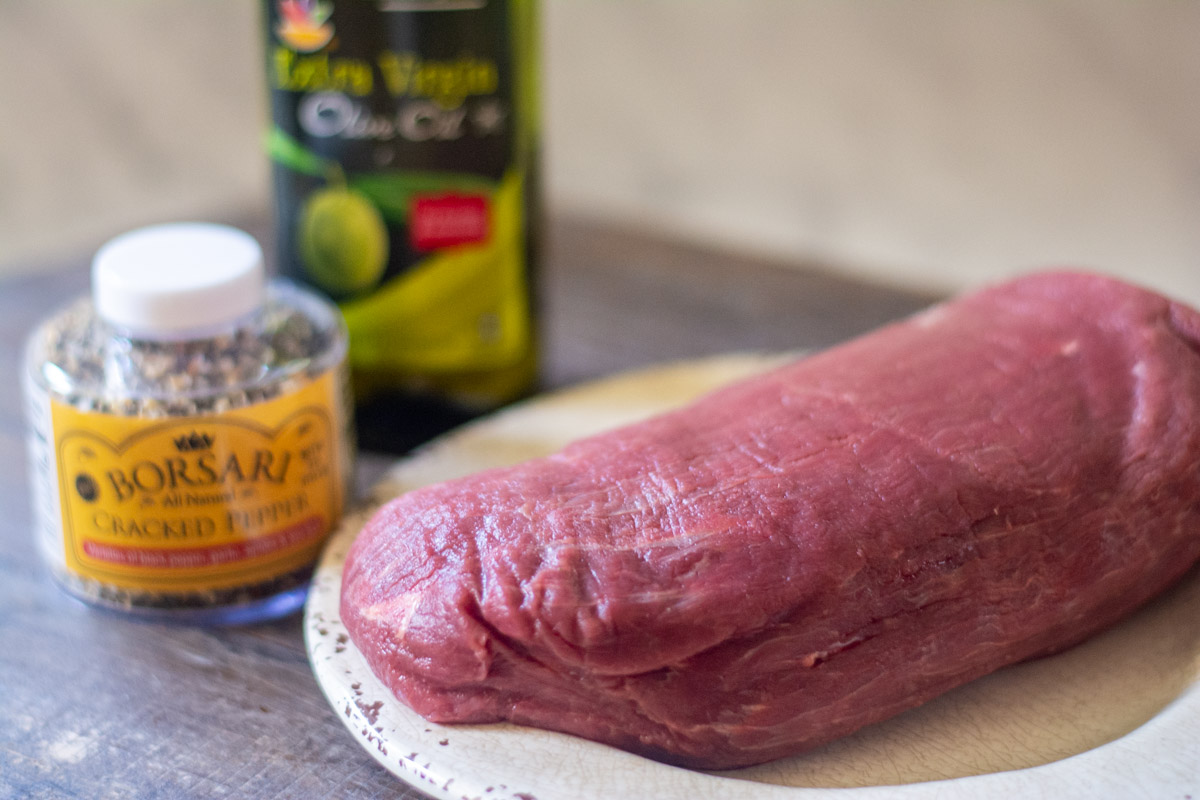
The eye of round steak delivers an intense beefy flavor but is among the less tender options on our list. This lean, boneless cut comes from the rear leg of the cow.
It’s a good choice if you need a low-fat steak but keep in mind it requires more careful cooking to avoid a tough texture.
🔪Preparation/Cooking | Typically, this cut is cooked using slow and moist techniques like slow-roasting, and braising.
Also, marinating an eye of round steak is a common method for tenderizing the meat.
I say you can definitely grill or smoke this cut, as long as you carefully monitor the internal temperature. Like most lean cuts that are on the tougher side, a medium-rare to medium doneness is best.
This grilled peppercorn crusted eye of round roast turned so juicy! I gave it a quick sear and then grilled it at 350°F over indirect heat until it reached an internal temperature of 135°F (medium-rare).
It is best served as thin slices after a short resting time. These slices are also perfect for sandwiches and salads, so keep those leftovers!
🗒️Alternative Names | Round eye pot roast, eye round roast.
Beef Coulotte (Top Sirloin Cap)
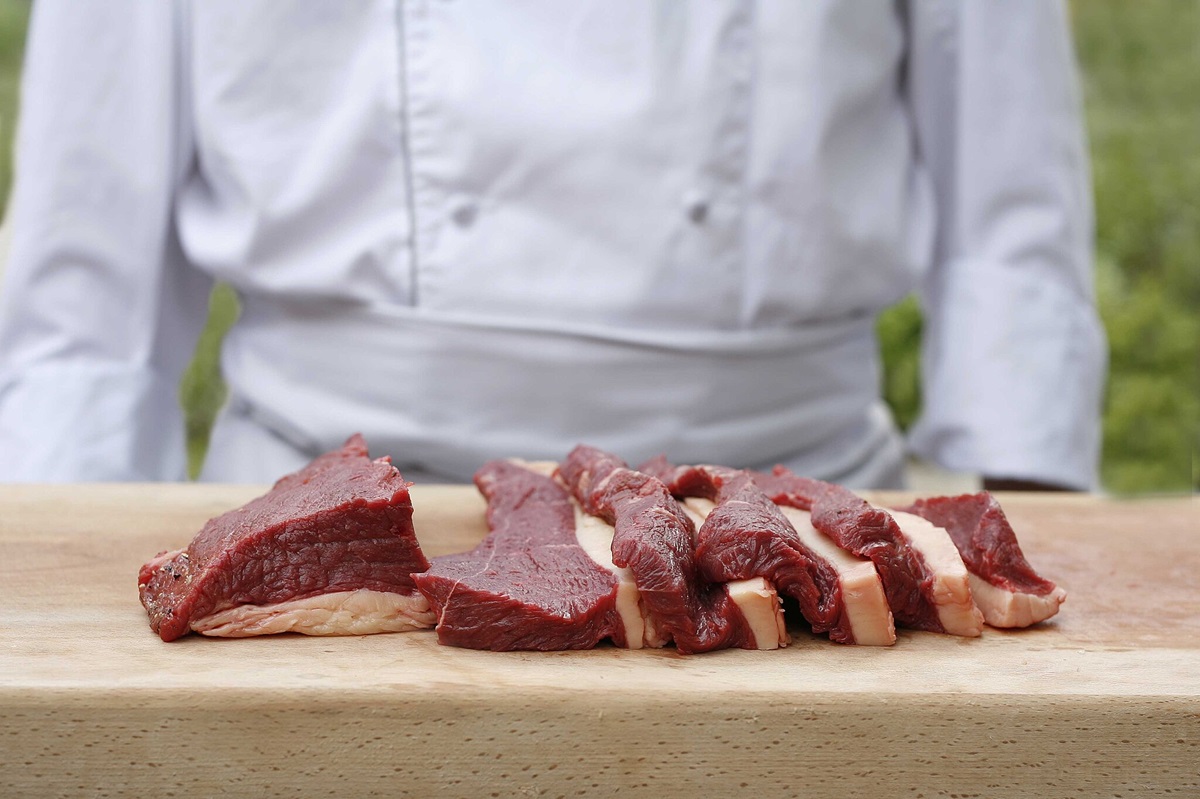
The fat cap and decent marbling of the beef coulotte make it a bit easier to cook it to the perfect texture.
Also known as a top sirloin cap, this boneless cut is popular in Brazilian steakhouses and delivers a robust, beefy flavor.
🔪Preparation/Cooking | You can cook it whole, as a roast, or cut into steaks. I always keep the fat cap and give it a quick score before applying the seasoning. It will help the spices better stick and allow more fat to render and keep the meat moist.
In either form, you can grill or roast the coulotte, and it will be juicy and tender as long as you don’t cook it past medium.
🗒️Alternative Names | Picanha, rump cover, rump cap.
Beef Fajita Strips
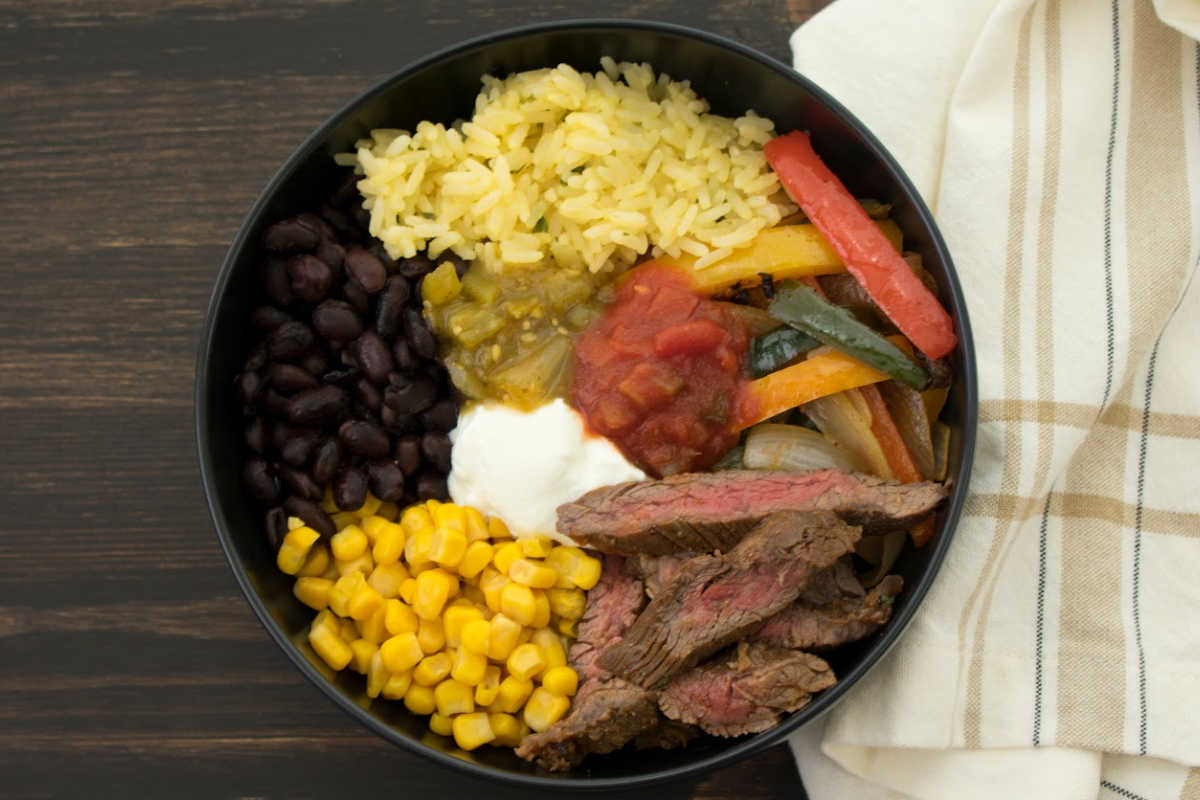
Ok. In full disclosure, I definitely can be lazy at times! We all have those days when we’ll pay a bit more for something in order to save time later. That is my love-hate relationship with pre-cut beef strips.
The butcher will cut them thin (against the grain) and then package them up. It is typically a bit more expensive, but if I am in a rush, it is totally worth it.
These are usually sliced skirt or flank steak.
🔪Preparation/Cooking | I like to season these myself, so I avoid the ones that have been pre-seasoned. They always feel a bit too salty for me.
Fajita strips have a rich beef flavor and absorb marinades well, so this is an option worth exploring.
Definitely cook them in batches. They have a short cooking time and overcrowding will make them sweat and steam rather than sear.
High heat is essential to caramelize the strips without overcooking them. Don’t cook these past medium-rare as they can easily turn chewy.
🗒️Alternative Names | Fajita meat, fajita cut, fajita-style beef, flank steak strips, skirt steak strips, stir-fry beef, carne asada strips, beef tenders, beef sizzle steak, beef for stir-fry, beef loin strips.
Vegan Alternatives
There are times when you want to make a recipe with vegan alternatives and these five options are going to be the “go-to” ones you reach for time and time again.
Making a stir fry using tofu or sliced-up portobello mushrooms is going to taste out of this world.
Portobello Mushrooms
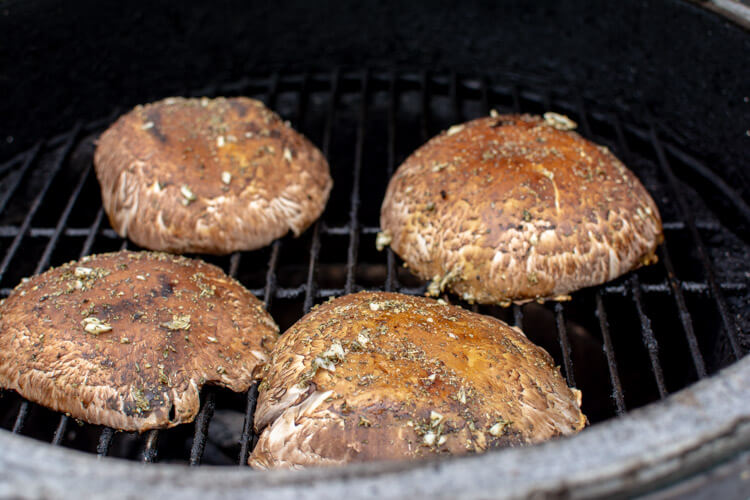
So, I definitely prefer my red meat, but my favorite vegetarian substitute is large portobello mushrooms. They are extremely versatile and I even made a portobello pizza with them.
Since most of the flank steak recipes require thin slices for things like fajitas or stir fry, these mushrooms become a fantastic replacement. The “meat” is really dense and it holds together well. It also slices easily, keeping a similar size, shape and texture to the beef.
🔪Preparation/Cooking | While you can still marinade them, I recommend brushing the marinade on while they are grilling.
They absorb the flavors extremely fast and will cook even faster than the flank steak.
Tofu

The only real key for Tofu is to use the “firm” variety. Soft tofu will fall apart too easily and won’t hold the shape you want for fajitas.
It is a soy-based product filled with protein that readily takes on the flavor of anything it is served with.
🔪Preparation/Cooking | Brush the marinade on this as well. If you cut it thinly, it will work perfectly for a vegan-friendly flank steak substitute.
Cauliflower
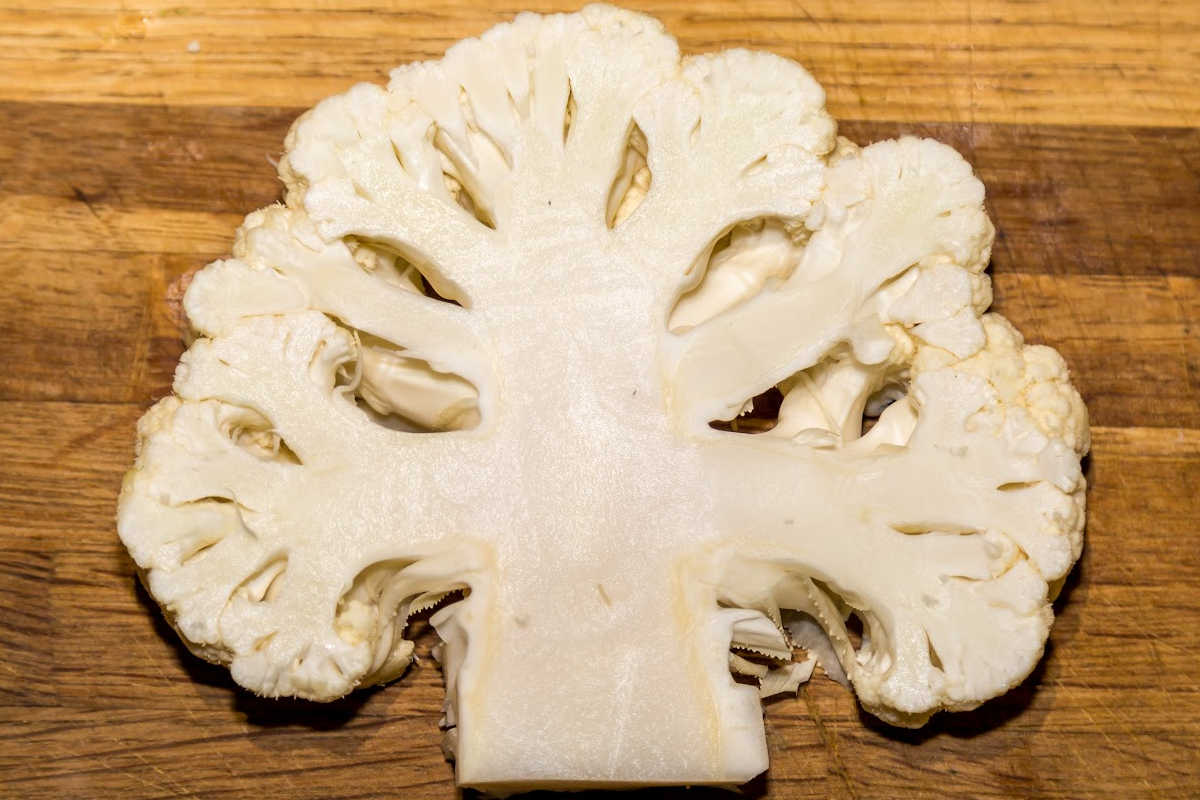
I adore cauliflower! I bet your family won’t really know (or care) that this is a vegan friendly substitute. It will just taste like heaven and is significantly less money than beef.
One of my favorite recipes is the smoked whole head of cauliflower, as it complements virtually any flavors you add to it.
🔪Preparation/Cooking | Whether you smoke or roast the whole cauliflower, slicing ½ – ¾” slices and cooking that with the same marinade you would for the flank steak is a phenomenal idea.
The center of the cauliflower is firm and dense and really holds up well to slicing, like you would the steak. Your seasoning will be the star of the show.
Vegan Steaks
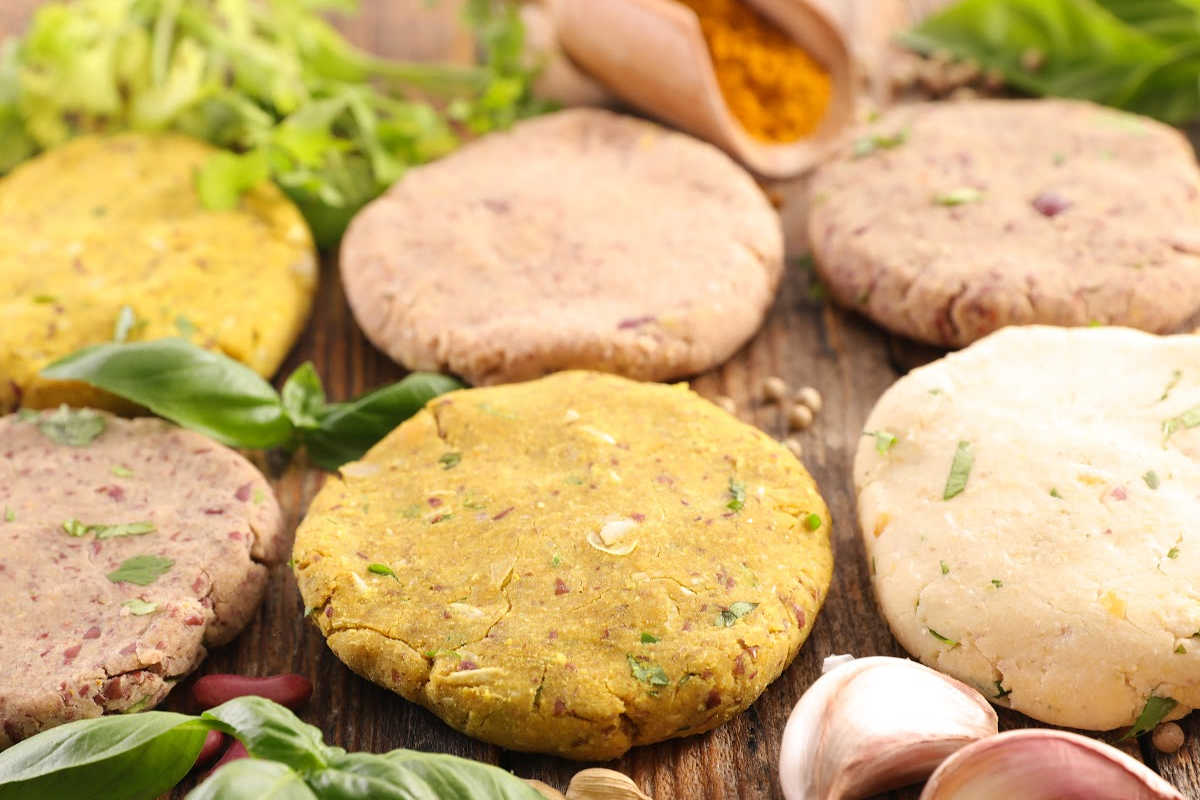
There are vegan-friendly steak substitutes you can buy in the store. I really haven’t experimented with them too much, but wanted to show it as an alternative.
In my mind, these are more expensive, and I would much prefer to use cauliflower, mushrooms, or cabbage as I know exactly what’s in them.
Most commercial meat substitutes aim to replicate the taste and texture of real steak. However, the fat content, and ingredients used vary between different brands.
🔪Preparation/Cooking | The same goes for cooking methods. I recommend you read the package and if there are any instructions, follow them at least the first time so you know what you’re dealing with.
Cabbage Steaks

Cabbage works well in a pinch. While it absorbs the flavoring well, it may have a tendency to fall apart a bit easier.
Like cauliflower, this is a very inexpensive option that is also extremely good for you.
Of course, cabbage has a completely different taste and texture compared to steak. That’s absolutely fine, as long as you enjoy it.
🔪Preparation/Cooking | The hard, dense centers work well for slicing, but the looser leaves on the outside may fall off. Smaller cabbages are easier to handle and slice if you can find them.
If you have to buy a large head of cabbage make sure it is firm. Green and red both work. Cut the cabbage into 3/4-1 inch thick slices. Do not remove the core. It helps keep the “steak” together.
Brush both sides of your cabbage steaks with olive oil and use your favorite seasoning.
You can roast, grill, or pan sear them over medium-high heat (350-400°F). They should get a nice golden brown color or slight char (for grilling) around the edges but the center should still be a bit firm.
This is a great veggie to season with a balsamic glaze and a touch of Parmesan cheese before or after cooking. You can also top it with other ingredients such as grilled onions, sauteed mushrooms, or a rich, creamy sauce.
Jackfruit
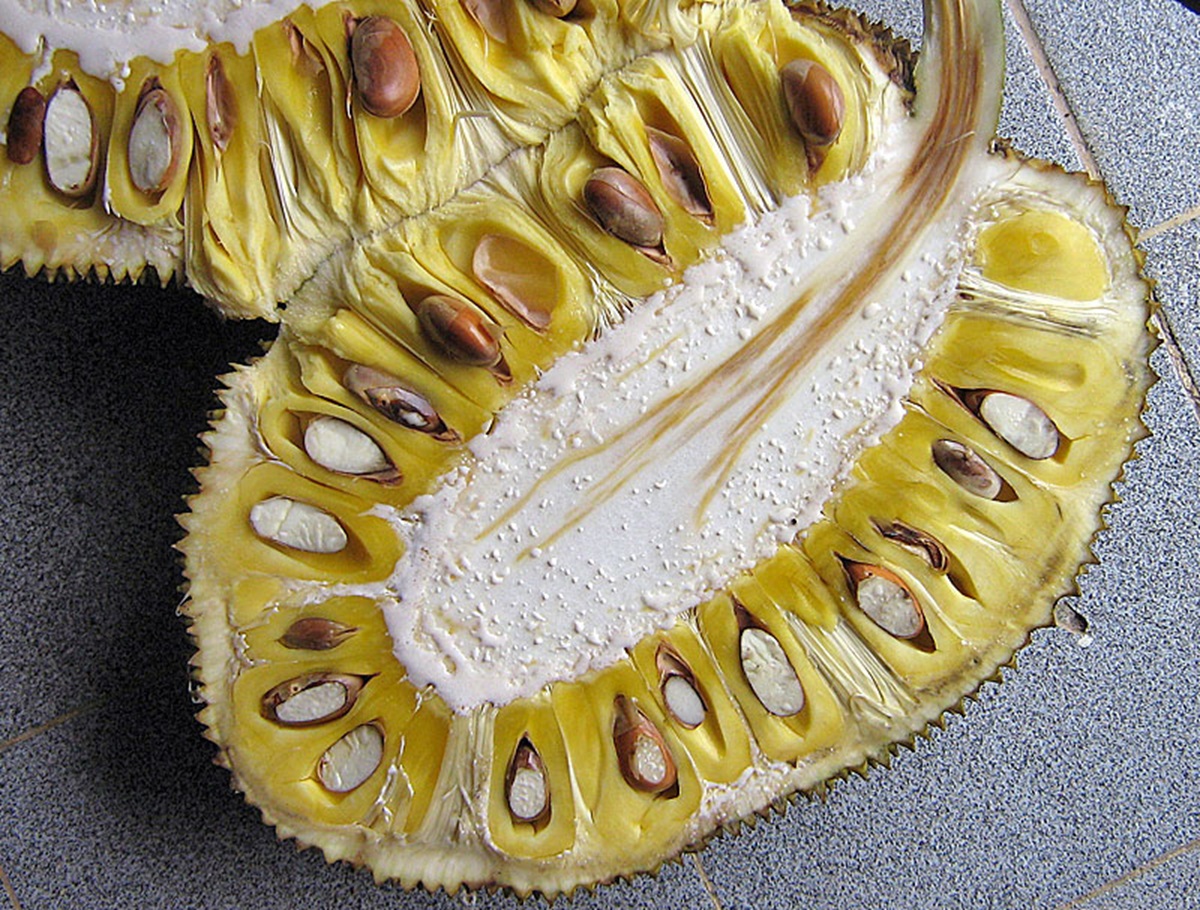
When young and unripe, Jackfruit has a stringy meat-like consistency and a neutral flavor perfect for absorbing marinades and seasonings.
This tropical fruit is a popular vegan steak alternative because of how close its texture is to that of meat.
🔪Preparation/Cooking | To substitute steak, jackfruit is usually slow-cooked to a tender, pull-apart consistency.
You can also marinate jackfruit and cook it in a skillet, or oven. The main way to use it is as a replacement for sliced or shredded beef, in tacos, sandwiches, and casseroles.
Seitan
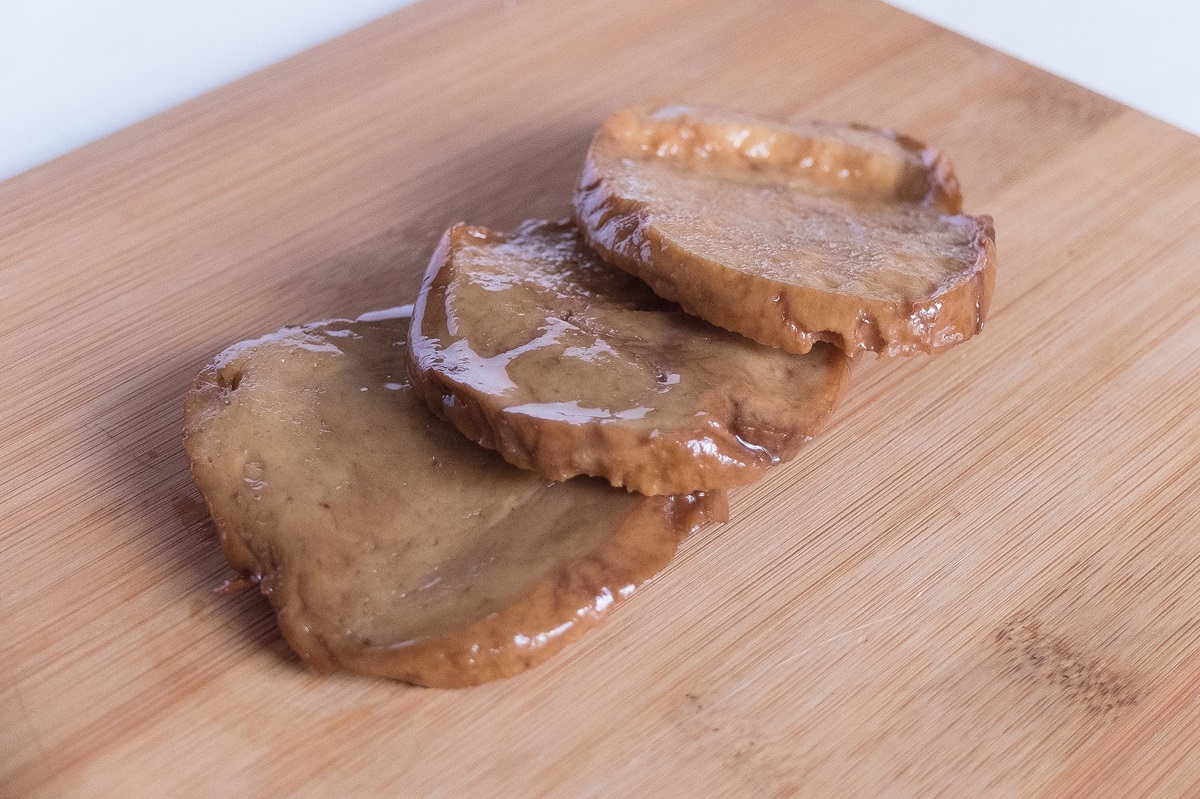
Seitan, also known as wheat meat, is a vegan protein produced from vital wheat gluten. It has a chewy, dense texture that’s pretty close to meat, so it’s a good vegan flank steak substitute.
You can flavor it in various ways to resemble almost any dish that calls for meat.
🔪Preparation/Cooking | Slice or chop the seitan to create vegan steak strips. The best way to infuse flavors into seitan is to marinate it.
You can grill, pan-fry, or stir-fry seitan and use it in stir fries, fajitas, or grilled skewers.
The key here is to cook it fast over high heat. This will help it become crispy on the outside while remaining juicy on the inside.
❓ Frequently Asked Questions
When you are at your grocery store or butcher, ask for skirt steak or flat iron for the most similar cut.
No, flank steak comes from the belly area and the flat iron comes from the shoulder area. The flank steak is leaner and has a lot of connected tissues.
On the East Coast of the United States this cut is less common and when it is available it may not be under the name “tri-tip”. Some alternative names used for this cut of beef include triangle steak, Santa Maria steak, bottom sirloin tip, or culotte steak.
More Steak Recipes and Comparisons
How to Tell if Steak Has Gone Bad
Summary
Alright! There are numerous beef and vegetarian substitutes for flank steak to choose from, so if you are ever in a pinch, refer back to see what else will work well.
Tried this recipe? Please leave a star ⭐️⭐️⭐️⭐️⭐️ rating in the recipe card below and/or a review in the comments section further down the page. You can also stay in touch with me through social media by following me on Instagram, Pinterest, and Facebook!
Related Articles
- Retro BBQ Blast: 15 Old-School Mains Get Genius Modern Twists
- 25 Flavor-Packed Spins On Mac And Cheese That Will Level Up Your Favorite Comfort Food
- 15 Easy Homemade Coffee Drinks To Curb Your Cravings and Spare Your Wallet
- 23 Frugal Under 1-Hour Grilled Chicken Breast Recipes For Tired And Hungry Nights

Jason’s been firing up the grill for over 30 years after graduating from the US Coast Guard Academy. His love of finely-grilled steak and chicken led him to buy his first Weber grill to put on his apartment patio in 1992. Each military move led to a new grill (a mixture of gas and charcoal) until he fell in love with the Big Green Egg in 2008. Since then, he has added another 4 grills to the collection. Yes, he has a problem. Jason loves smoking in the ceramic BGE with exotic woods including olive wood from Egypt and hard to find varieties such as sassafras and orange wood. Jason takes the term “foodie” to a whole new level, jumping at the chance to take food tours and cooking classes during foreign travels. These have provided inspiration to incorporate new ideas into recipes when he gets back home. He has been featured in Fox News, Parade, Yahoo News, Kansas City Living and more. After retiring from the military and moving to southwest Florida, he has focused grilling and smoking locally sourced meats and fish (read: he likes to catch his own fish!)




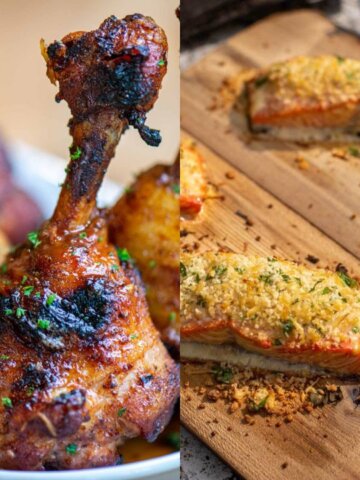



Leave a Reply